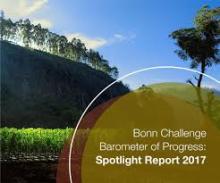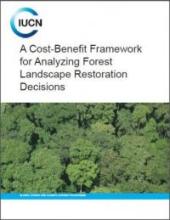Land Library Search
Through our robust search engine, you can search for any item of the over 73,000 highly curated resources in the Land Library.
If you would like to find an overview of what is possible, feel free to peruse the Search Guide.
/ library resources
Showing items 1 through 9 of 11.Indicator 15.1.2: Proportion of important sites for terrestrial and freshwater biodiversity that are covered by protected areas, by ecosystem type
The protection and revival of degraded and deforested land is the need of the hour. In order to tackle the issues that arise as a consequence of degradation and deforestation, principles of forest landscape restoration are being globally promoted.
Biodiversity is inherent in forest landscape restoration. As global initiatives like the Bonn Challenge and New York Declaration on Forests inspire nations to pursue sustainable landscapes and economic growth, on the ground, biodiversity binds people and nature to their shared future.
This report presents the results of the National Forest Landscape Restoration Assessment (NFLRA) for Malawi.
The Bonn Challenge is a global effort to bring 150 million hectares (Mha) into restoration by 2020 and 350 Mha by 2030.
Forest landscape restoration (FLR) provides an opportunity to transform degraded lands into productive landscapes that yield numerous ecological, economic, and social benefits.
The Restoration Opportunities Assessment Methodology (ROAM)1 was developed by the International Union for Conservation of Nature (IUCN) and the World Resources Institute (WRI) to assist countries in identifying opportunities for forest landscape restoration (FLR), analysing priority areas at a na
This document provides information on how implementing forest landscape restoration (FLR) at the jurisdictional and national level can offer countries a way to recover degraded forests and bring back key forest ecosystem functionalities in a way that will increase biodiversity levels in a landsca
Forest landscape restoration activities are often misunderstood as involving high upfront costs and low rates of return.








